Cooling system and backplate
Of course, the generated waste heat is directly related to the recorded power, for which the cooling solution is responsible for optimum dissipation. This rather conservative cooling system relies on a large lamella heat sink and a blackened plate made of light metal for cooling some components, which must be cooled from above by the air flow itself.
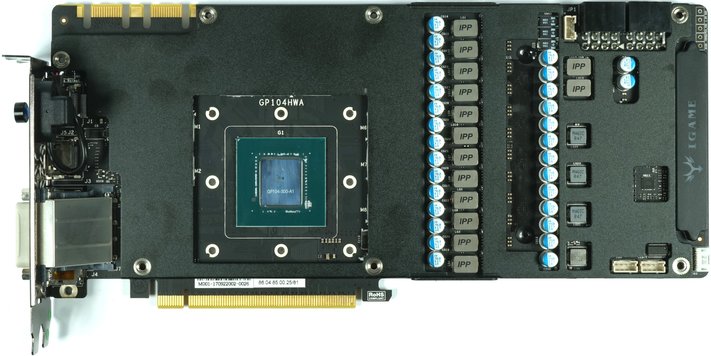
The cooling for voltage converters and memory must be used, as in the case of e.g. MSI and EVGA also release exactly this cooling frame between the radiator and the board, which we also like to call a sandwich plate. However, this concept is justifiable, although not optimal, in these performance areas. In addition, this plate is very thin and in some places the webs are already so scarce that one can hardly speak of stability.
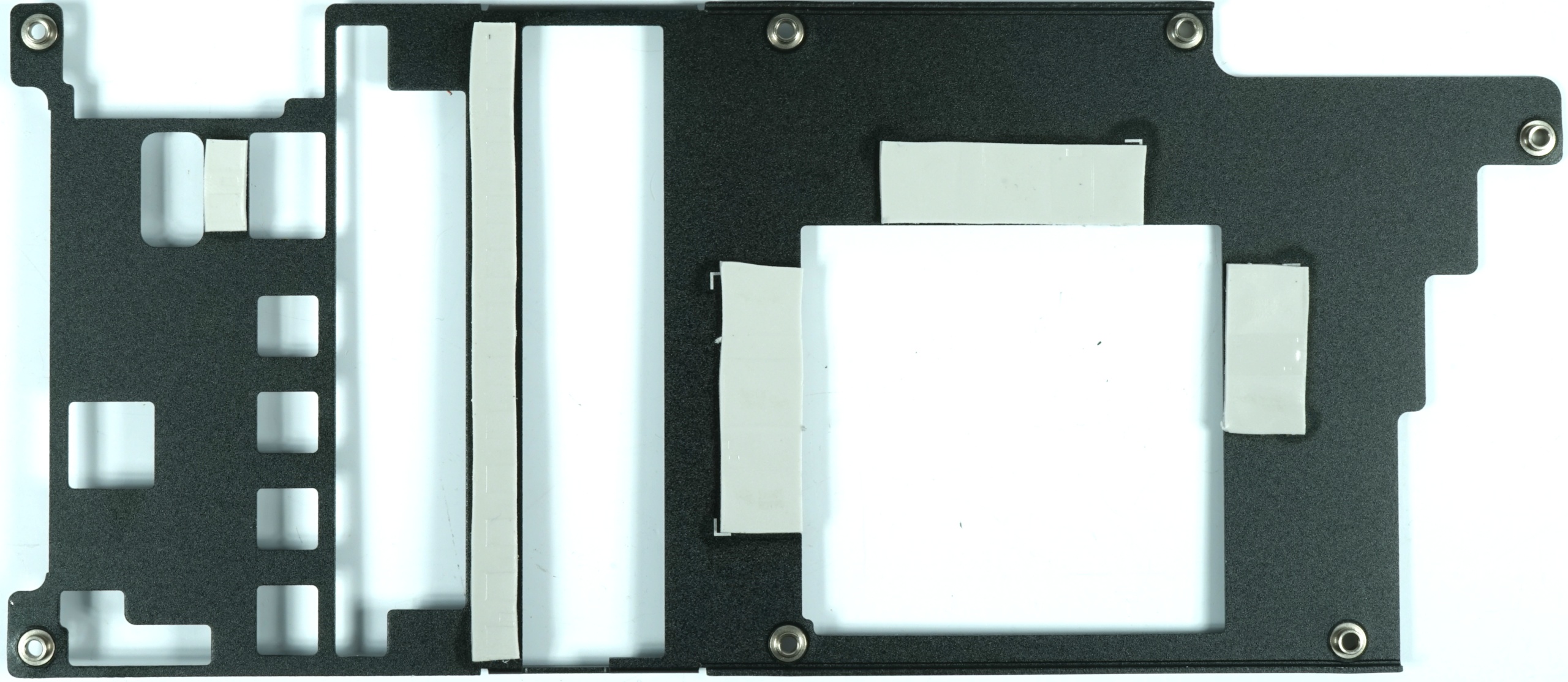
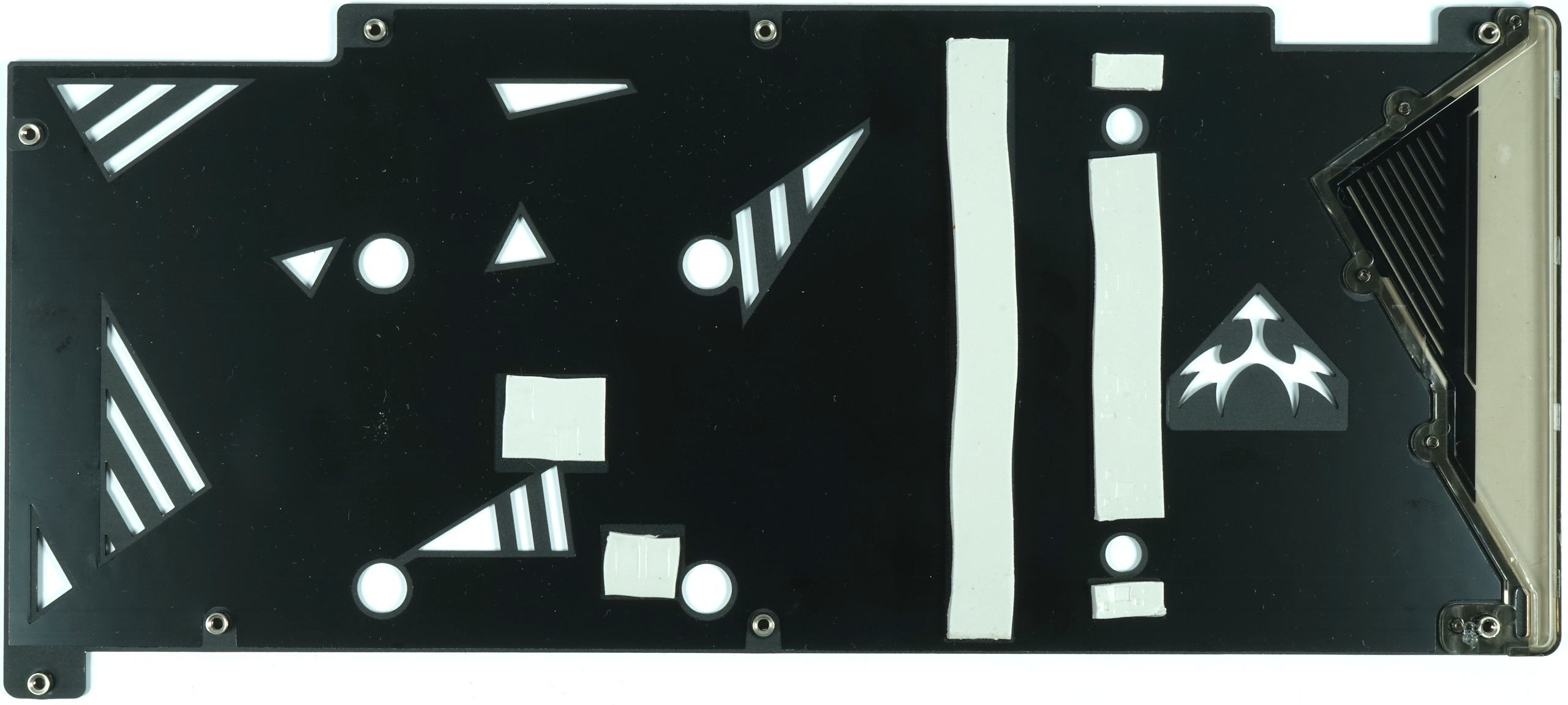
| Cooling system at a glance | |
|---|---|
| Type of cooler: | Air |
| Heatsink: | Nickel-plated heat sink for GPU |
| Cooling fins: | Aluminum, vertical alignment |
| Heatpipes | 6x 8 mm, copper composite, nickel-plated |
| VRM cooling: | GPU and memory VRM via mounting frame |
| RAM cooling | via mounting frame |
| Fan: | 2x 9 cm fan modules 1x 8cm fan module 9 rotor blades each semi-passive regulation |
| Backplate | Aluminum, blackened Cooling function |
The cooler itself is a large and above all heavyweight Bolide, whose heatsink delights a total of six 8 mm heatpipes made of nickel-plated composite material with the absorbed GPU waste heat and hopes for quick removal. The VRM heatsink visible here, on the other hand, is completely functional. We already mentioned it in the board design and if you also look at the top image on this page, you also understand why.
It just cools: nothing. Exactly at this point the cooling frame is cut out, so that this heat sink approx. 2.8 mm hanging in the air above the board. We have glued a suitable 3 mm pad between these heatsink and the board and see there – a whopping 2°C less on the neighboring VRM and the nearest memory module at the Furmark in the closed housing. Go!
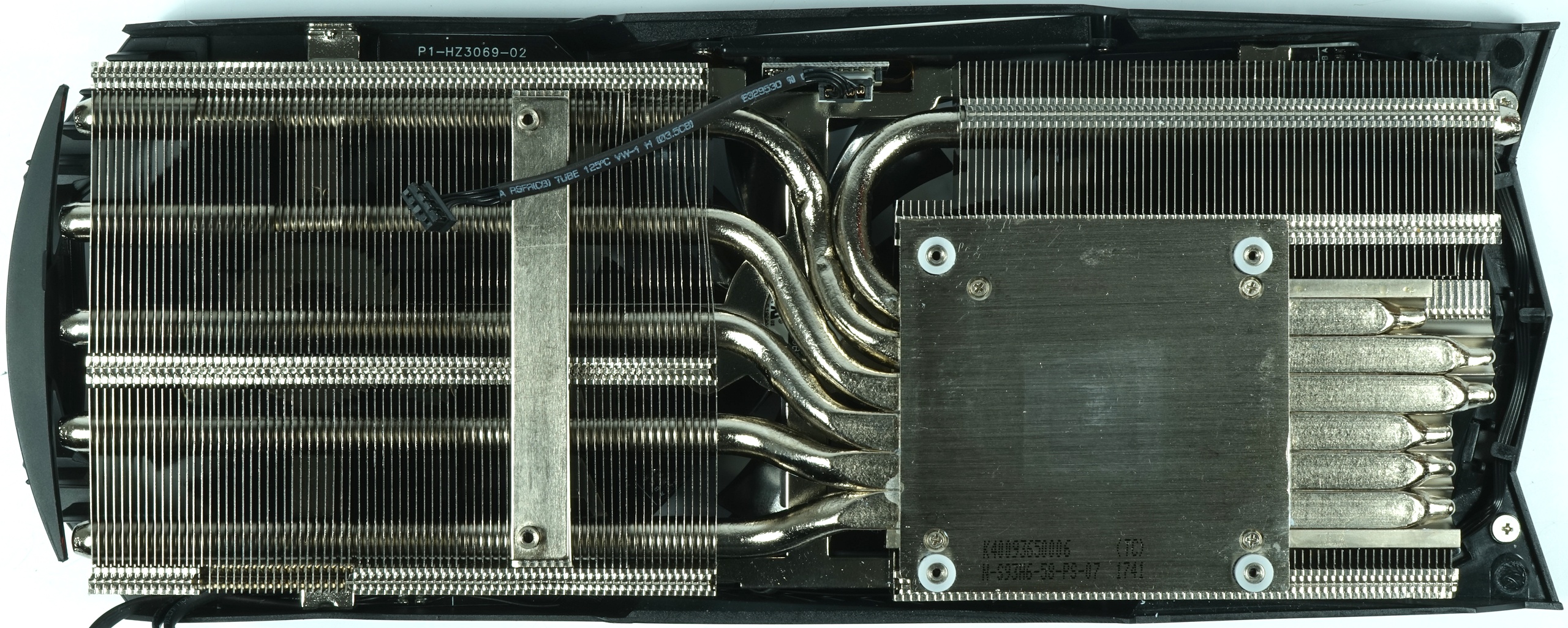
The three fans used, with their 9 blade-like rotor blades per fan, are designed for airflow/throughput rather than uniformly applied static pressure. However, we will have to come back to these fans later when it comes to the fan control and the speeds, because it will be a bit louder.
Fan curves and noise emission (“volume”)
The fan curves show that Colorful uses a passive mode, i.e. a fan shutdown. Under load, the whole thing then levels in a closed housing at approx. 2000 rpm (50% PWM), which is quite noisy. But that’s how Asians are, because noise implies power. So these fans are almost like the secretly drilled exhaust on Klaus Kevin’s moped.

The whole thing doesn’t look much different with the stress test. In summary, the card with the three fans can already set an acoustic fragrance mark. Unfortunately in a negative sense.
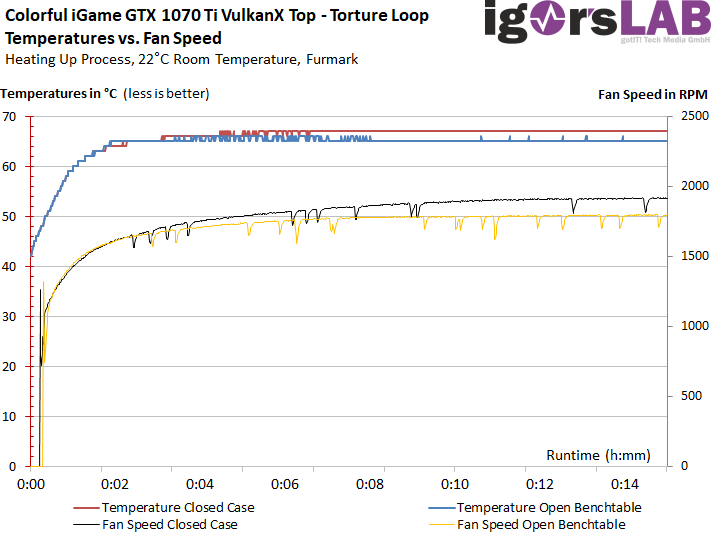
Reserves to make the fans rotate lower, the card hardly has any more, you could actually make it louder in return to get it cooler. But who wants that?
| Measurements for fans and noise emission |
|
|---|---|
| Fan speeds Open Benchtable Maximum |
1835 rpm |
| Fan speeds Open Benchtable Average |
1822 rpm |
| Fan Speeds Closed Case Maximum | 2006 rpm |
| Fan Speeds Closed Case Average | 1998 rpm |
| Noise emission (air) Maximum |
40.3 dB(A) |
| Noise Emission (Air) Average |
39.6 dB(A) |
| Noise Emission (Air) Idle | 0 dB(A), passive mode |
| Sound characteristic / Hearing impression |
Storage and engine noise< 1 Hz audible air/demolition noises hardly or No voltage transformer noises |
To illustrate our subjective audio impression once again, we now have a high-resolution graphic with the complete frequency spectrum of our laboratory measurement:
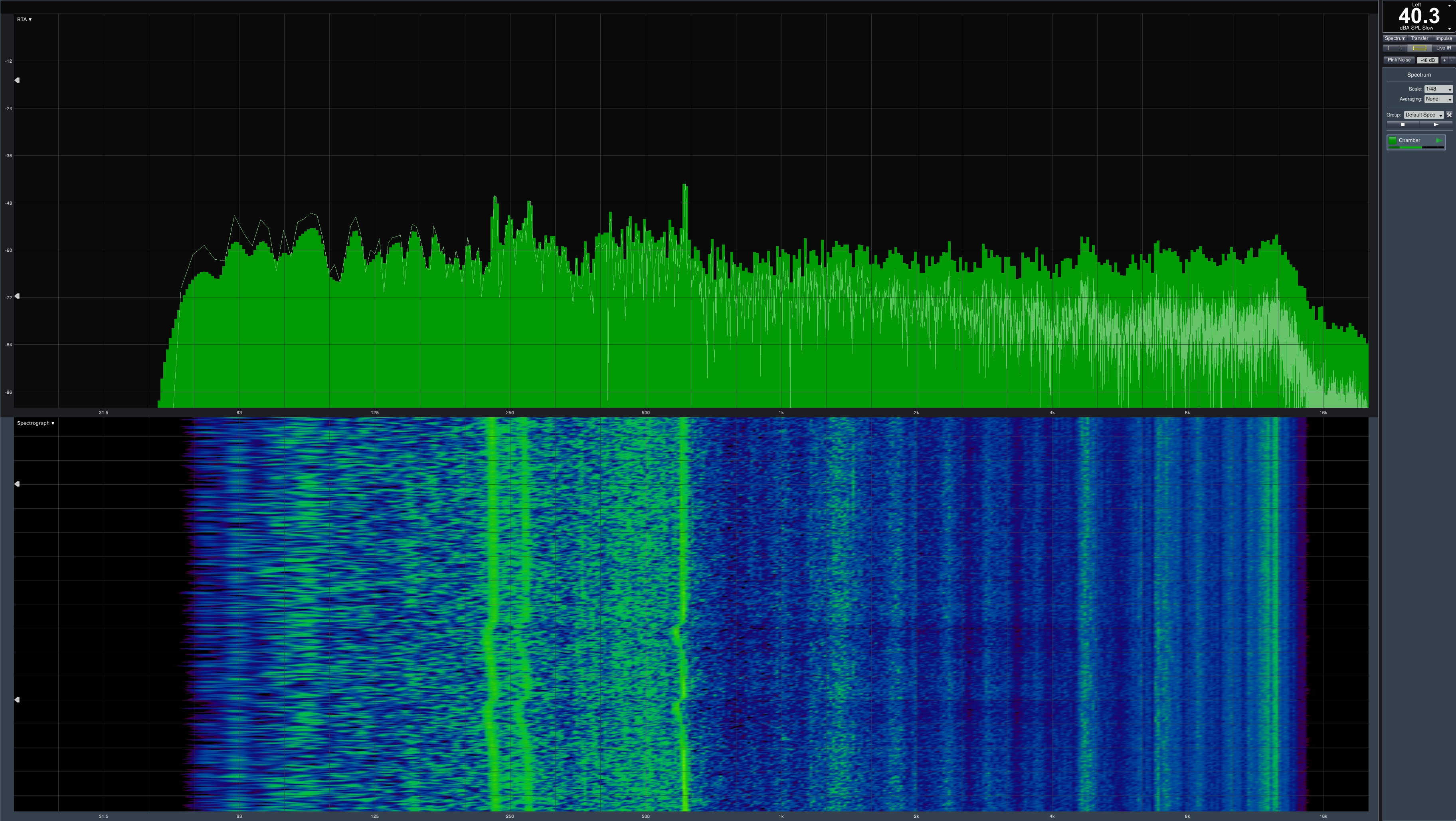
The 40.3 dB(A) is actually a bit too much for such a map and the measured temperatures, if you consider the weight and the size. The very counterproductive design swearing and not really high-quality fan modules leave a divided image at the end. Here, a fan of another card was effectively restored and, moreover, with a futuristic cover physically trimmed even further in the direction of nonsense.































Kommentieren